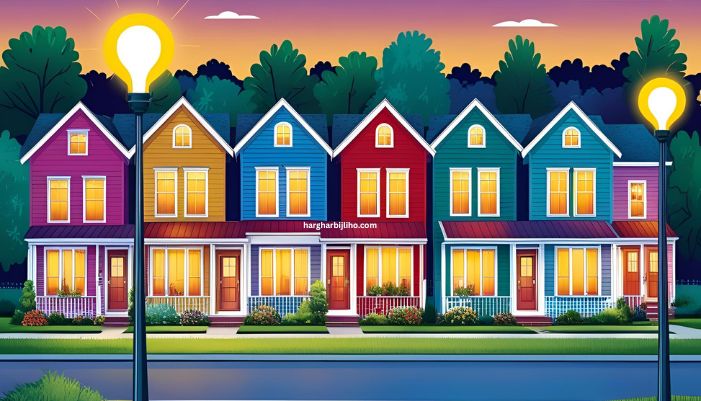In today’s world, electricity is not a luxury—it’s a basic need. It powers our lights, fans, phones, and helps our children learn and families grow. For millions of people in India, this simple need was once out of reach. The government’s Har Ghar Bijli scheme changed that.
Launched to ensure no home is left in the dark, this plan has connected millions of families to the power grid. From remote villages to dense urban slums, the scheme is bringing lasting change to people’s lives.
What is Har Ghar Bijli?
Har Ghar Bijli is part of the Saubhagya Yojana, launched in September 2017 by the Government of India. Its aim is simple: give every home in India access to electricity. This includes rural, urban, and remote areas—especially households that never had power before.
The scheme focuses on last-mile connectivity, meaning it reaches the very end of the power line—homes that have been missed for decades. For Below Poverty Line (BPL) families, the connection is free.

How Does It Work?
The scheme is run by local power companies known as DISCOMs. They go door to door in unconnected areas to identify households without electricity. Once verified, the team installs wiring, meters, and connects the home to the grid.
Where grid access is not possible—such as deep forest areas or islands—solar-based systems are given instead. These include LED lights, a fan, and a charging point powered by solar energy.
A mobile app and online portal allow people to check their application status, view progress, or report issues easily.
Major Achievements
The Har Ghar Bijli mission has made remarkable progress. By early 2021, more than 28 million homes had received electricity. Over 99% of India’s villages and urban slums were electrified.
States like Bihar, Uttar Pradesh, Madhya Pradesh, and Rajasthan saw some of the biggest improvements. Even difficult regions in the North-East and tribal belts were reached using solar kits or off-grid systems.
Real-time monitoring tools like the Saubhagya Dashboard help track progress, identify gaps, and ensure transparency.
How It’s Changing Lives
Electricity brings more than just light. It improves education, boosts safety, and creates jobs. Children can study at night. Families can use fans during hot weather. Mobile phones can stay charged, helping people stay connected.
Health centers can now run equipment, store vaccines, and work after dark. Small businesses like shops, salons, and tailors can stay open longer and earn more. The scheme has also reduced the use of kerosene, leading to cleaner air and safer homes.
Women, especially, benefit. They can cook, care, and work in better conditions. Many have started small businesses from home using electricity-powered machines.
Toongod: Future of Digital Entertainment 2025
Remaining Challenges
Despite huge success, some problems still exist. In remote areas, power lines often break or voltage is low. Some families cannot afford to pay monthly bills, even if they got the connection for free.
Electricity is now available in most homes, but reliability remains an issue. Power cuts are still common in rural and semi-urban areas. Also, maintaining old infrastructure and ensuring timely service are major concerns for local DISCOMs.
What’s Happening in 2025?
In 2025, the Har Ghar Bijli mission is going beyond just giving electricity—it’s focusing on better, cleaner, and stable power.
PM Surya Ghar Muft Bijli Yojana
This new plan aims to give free rooftop solar systems to 1 crore homes. It will reduce bills and ensure power even during outages.
Smart Meters and Digital Monitoring
More homes are now using smart meters, which help track usage and reduce billing errors. These tools also help companies detect power theft and avoid overloads.
UDAY 2.0 Reform Plan
To support long-term power quality, the government launched UDAY 2.0, which focuses on making power companies more efficient and financially stable.
Conclusion
Har Ghar Bijli is more than a scheme—it is a step toward a more equal and modern India. It gives every family a chance to live better, dream bigger, and build a brighter future.
With electricity in every home, people can learn, work, and grow without limits. While the mission isn’t fully over, it has already changed the face of rural and poor India forever.
As we move forward with solar power, smart grids, and 24/7 supply, India is proving that real progress starts with a simple switch—turning the light on for everyone.



